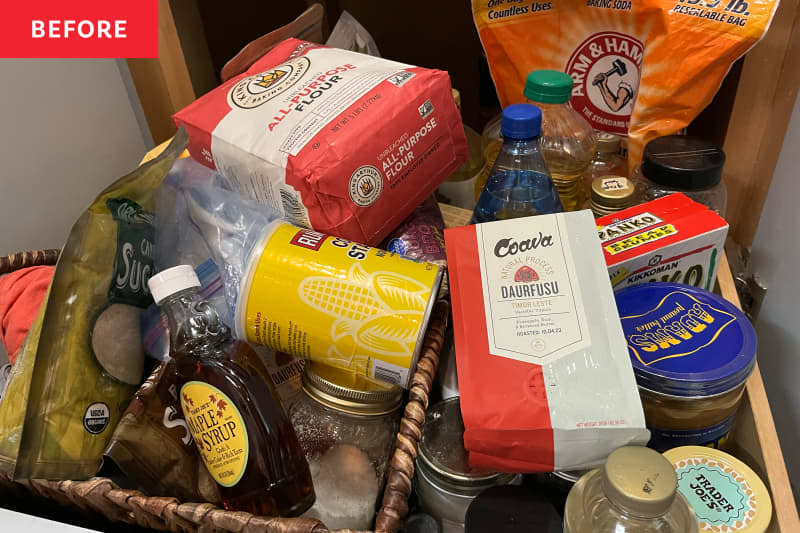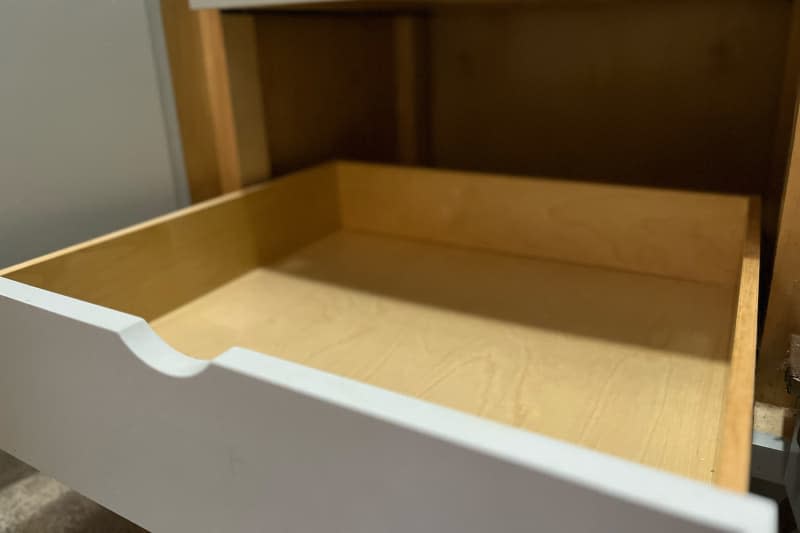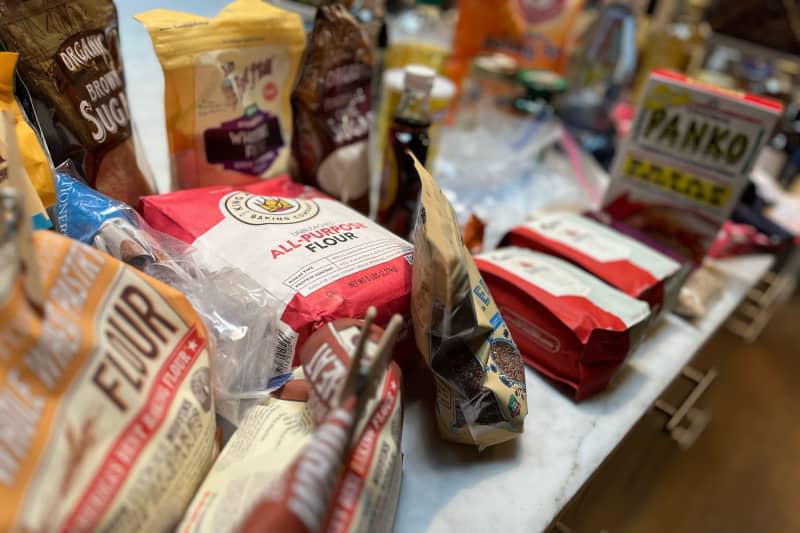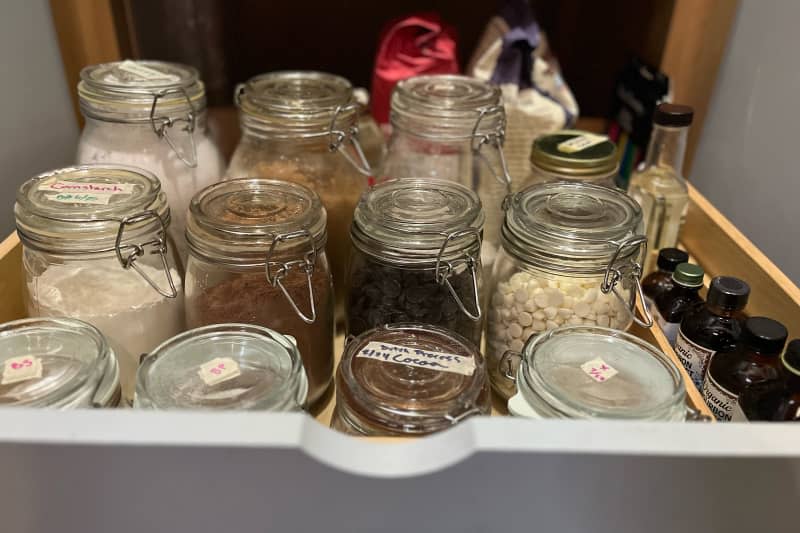I Sent a Pro Organizer a Photo of My Cluttered Pantry Drawer

My pantry drawer dedicated to back-stock items is out of control. It holds all the grocery duplicates I inevitably add to my cart, plus the Subscribe & Save products I can’t remember to cancel. I organize it periodically and swear I’ll keep it contained, but then King Arthur Flour goes on sale and I buy two five-pound bags because I have no choice.
I needed help, so I called one of my all-time favorite organizers, Stephanie Treantos, founder of Lemonaid Solutions (@lemonaidsolutions), a premier luxury home organization, staging, and styling firm in Maine. Treantos never minces words, and she quickly and efficiently diagnoses my problems, offering smart solutions every time. I couldn’t wait to learn the secret to a successful back-stock drawer. I was not prepared, however, for her shocking advice: Ditch the back stock entirely.
“The problem is … your zones,” says Treantos. I was storing flour in four different locations in my kitchen (seriously). Extracts were three steps away from the brown sugar. My back-stock drawer was taking up valuable pantry real estate — basically screaming to be turned into a baking drawer — but I couldn’t see it.

My Objections to Eliminating Pantry Back-Stock Items
I trust Treantos entirely, but I had questions and concerns. Here’s what she had to say.
What about sales?
“I throw out thousands of dollars’ worth of food [in my clients’ homes] because it’s expired,” says Treantos. Any savings gained at the time of purchase are lost with the wasted food.
I actually use my back-stock items!
Treantos asks if storing a year’s worth of flour is really the best use of the space. “You still have to go to the store,” she reminds me, and with a teenage boy in the house, our milk runs are pretty frequent. A two-week supply would be more than enough.
I will always have an extra bag of flour on hand.
The biggest aha moment in the call came when Treantos redefined back stock for me. I explained that I will always have flour waiting in the wings because I don’t decant until my flour canister is truly empty. “One extra isn’t back stock,” says Treantos. “Back stock is three or more.”
Where will my extra groceries go if I don’t have a dedicated space?
Here’s the ingenious thing about eliminating back stock: If I need to know if we’re out of coffee, I only have to look in one space. All of the coffee is stored together — both the beans I’m using and the unopened bag. There’s no need to dig through my back stock. For the flour problem, Treantos told me to make space in my baking zone for the bag I always have on hand.

How to Declutter Pantry Back-Stock Items
Convinced? Here’s how I applied Treantos’ advice — and how you can use it, too.
Shop for the space you have.
I live in a large house, but (I now know) I do not have a pantry conducive to a Costco lifestyle. “Shop for the space you have; I will die on this hill,” says Treantos. If you’ve been thinking about ditching the Costco membership, this is your sign to go for it.
Create zones.
Consider how you actually interact with food. Everyday items get priority placement, and each zone should contain only one category of food items. “If you’re making a snack, you should only have to open one [pantry] drawer,” says Treantos.
Treantos recommends using products and labels to create zone separation. This four-pack of bins is a great deal if you’re on a budget, she says. If your pantry is deep, try the 20-inch-long The Home Edit Everything XL Storage Bins instead. You can also skip the bins entirely and use these adjustable bamboo drawer dividers.
Donate the excess.
Shelters, food banks, charities, and Buy Nothing groups will all happily accept your unexpired back stock.
If you must have back stock, choose mindfully.
Every summer I stock up on truly life-changing strawberry jam from a local farm. To survive winter without a jam shortage, I need to make space for a dozen jars. “That’s OK,” says Treantos, as long as I’m deciding mindfully what items make sense to store in bulk.

Benefits of Eliminating Back-Stock Items
Now that I only “buy what [my] house can hold,” shopping trips are quicker, and unloading is a breeze. This morning I made scones using my new baking drawer, and I was shocked by how quickly everything came together. My children’s snacks are all in one place, and now I rarely hear, “Mom, I can’t find my Inner Peas!” (which is sort of a shame, but I have plenty of other opportunities for chuckles.)
If you had asked me before the call if I could function without back stock, I would have laughed. But now I agree with Treantos: “If back stock isn’t working, eliminate it.”

